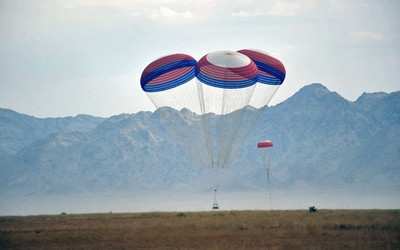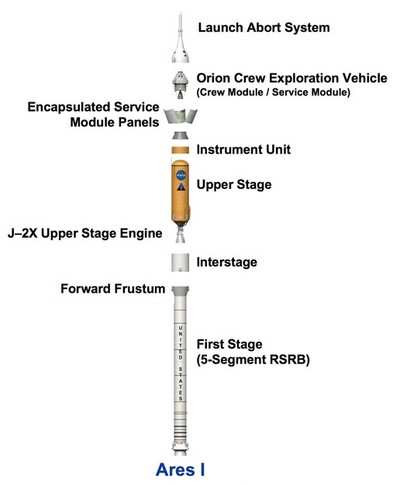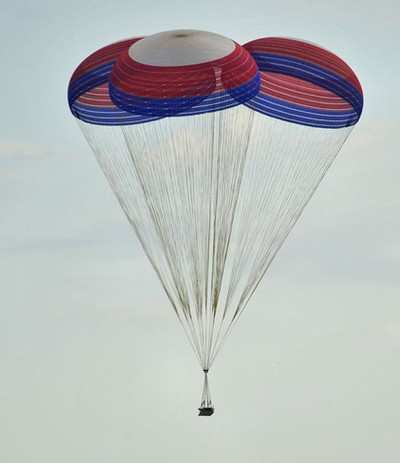Ares I's Three Main Parachutes Show Their
Stuff
What a drag... but in a goodd way! NASA and industry engineers
successfully completed the first test of the Ares I rocket's three
main parachutes Wednesday. The parachutes -- the largest rocket
parachutes ever manufactured -- are designed to slow the rapid
descent of the rocket's spent first-stage motor, permitting its
recovery for use on future flights.

The Ares I, the first rocket in NASA's Constellation Program, is
designed to launch explorers aboard the Orion crew capsule on
journeys to the International Space Station, the moon and beyond.
The three main parachutes measure 150 feet in diameter and weigh
2,000 pounds each. They are a primary element of the rocket's
deceleration system, which also includes a pilot parachute and
drogue parachute. Deployed in a cluster, the main parachutes open
at the same time, providing the drag necessary to slow the descent
of the huge solid rocket motor to a soft landing in the ocean.
"The successful main chute cluster test today confirms the
development and design changes we have implemented for the Ares I
first stage recovery system," said Ron King, Ares I first stage
deceleration subsystem manager for the Ares Projects at NASA's
Marshall Space Flight Center in Huntsville, Ala. "Thanks to our
great, collaborative team, the test went as anticipated, and all of
our design objectives were met."

Engineers from Marshall managed the team that conducted this
first cluster test at the U.S. Army's Yuma Proving Ground near
Yuma, Ariz. This was the eighth in an ongoing series of flight
tests supporting development of the Ares I recovery system.
Researchers dropped the 41,500-pound load from a U.S. Air Force
C-17 aircraft flying at an altitude of 10,000 feet. The parachutes
and all test hardware functioned properly and landed safely.
As the test series progresses, engineers will perform three
classifications of testing: development, design load and overload.
Each level of testing is designed to fully test the performance of
the new parachute design with different size payloads under varying
conditions. The next test in the cycle -- scheduled for fall 2009
-- will involve the first design limit load test of a single main
parachute.

The Ares I recovery system currently under development uses
parachutes similar to those used for the four-segment space shuttle
boosters, but the parachutes have been redesigned to accommodate
the new requirements of the Ares I first stage. The Ares I launch
vehicle will have a five-segment solid rocket booster that will fly
faster and fall from a higher altitude than the shuttle
boosters.
ATK Space Systems near Promontory, Utah, is the prime contractor
for the first stage booster. ATK's subcontractor, United Space
Alliance of Houston, is responsible for design, development and
testing of the parachutes at its facilities at NASA's Kennedy Space
Center in Florida.

NASA's Johnson Space Center in Houston manages the Constellation
Program. Marshall manages the Ares Projects. The U.S. Army's Yuma
Proving Ground provides the test range, support facilities and
equipment to NASA for parachute testing.
 ANN's Daily Aero-Linx (05.02.24)
ANN's Daily Aero-Linx (05.02.24) ANN's Daily Aero-Term (05.02.24): Touchdown Zone Lighting
ANN's Daily Aero-Term (05.02.24): Touchdown Zone Lighting Aero-News: Quote of the Day (05.02.24)
Aero-News: Quote of the Day (05.02.24) ANN FAQ: Contributing To Aero-TV
ANN FAQ: Contributing To Aero-TV NTSB Final Report: Cirrus Design Corp SR20
NTSB Final Report: Cirrus Design Corp SR20






